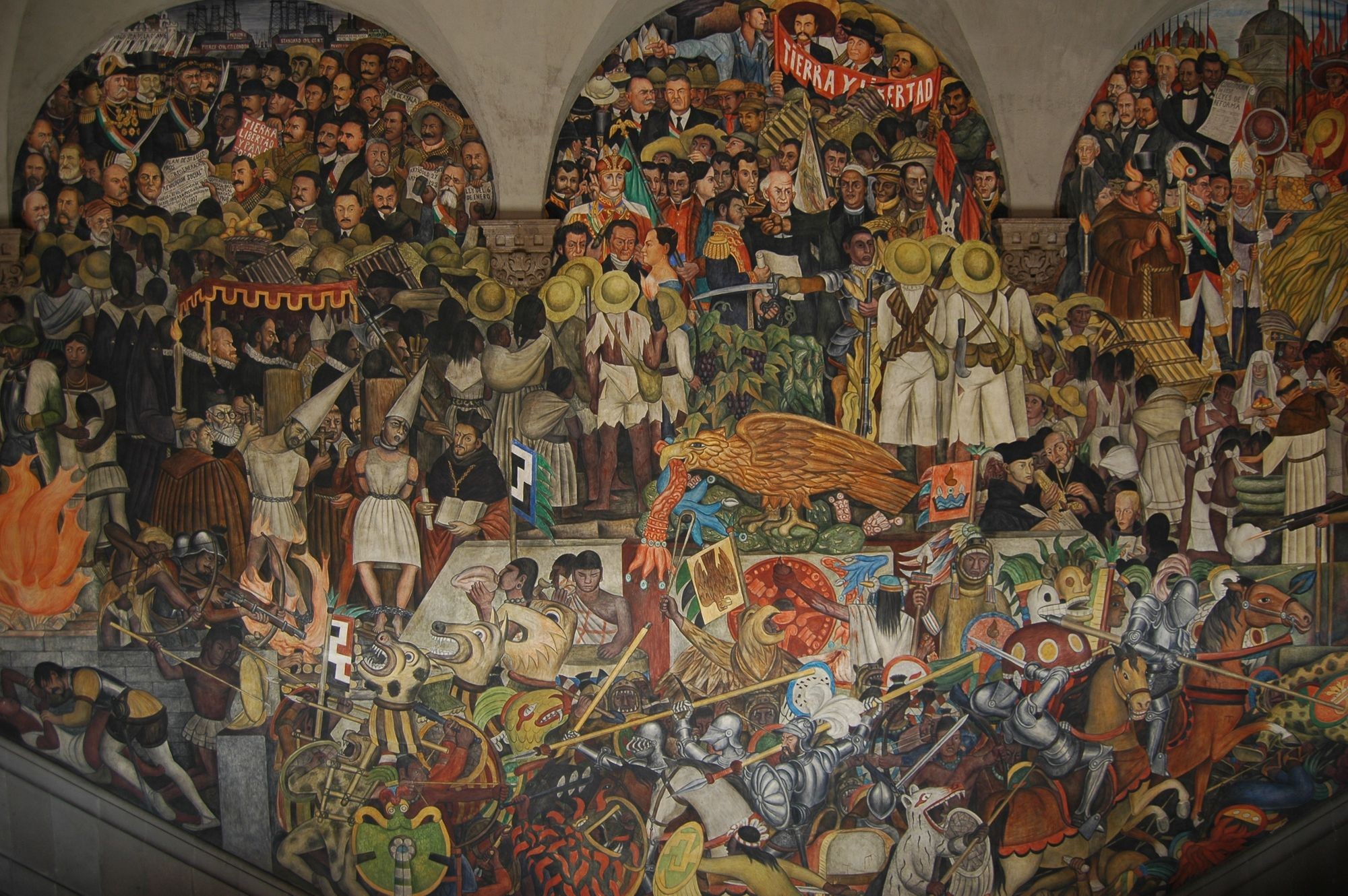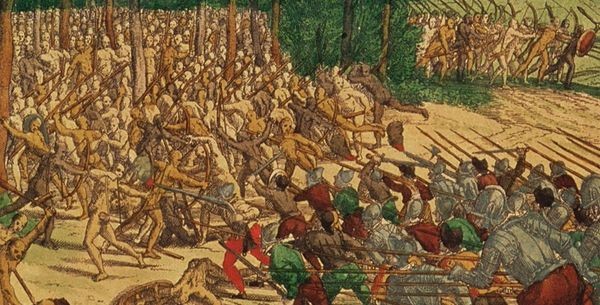How Did Mexicans Learn Spanish? It’s a fascinating story of cultural exchange and historical shifts. LEARNS.EDU.VN reveals the journey of how Spanish became the dominant language in Mexico, exploring the historical context, linguistic influences, and the ongoing efforts to preserve indigenous languages. Discover the full story and enhance your understanding of Mexican culture with LEARNS.EDU.VN. Explore the fusion of indigenous heritage and Spanish influence and uncover language acquisition insights.
1. Do Mexicans Primarily Speak Spanish?
Yes, the vast majority of Mexicans speak Spanish, or Español. It serves as Mexico’s de facto national language, with over 99% of the population speaking it. This makes Mexico the most populous Spanish-speaking country in the world. However, Mexico is also home to many indigenous languages, recognized by the National Institute of Indigenous Languages (INALI), including over 200 linguistic variants of indigenous origin. Understanding the prominence of Spanish alongside the presence of indigenous languages provides a comprehensive view of Mexico’s linguistic landscape.
1.1 Top Indigenous Languages Spoken in Mexico
Here’s a glimpse into the vibrant linguistic diversity of Mexico, showcasing the ten most widely spoken indigenous languages:
| Language | Estimated Number of Speakers | Primary Regions |
|---|---|---|
| Nahuatl | Approximately 1.7 million | Central Mexico, including Veracruz, Puebla, Hidalgo, San Luis Potosí, Guerrero |
| Yucatec Maya | Around 850,000 | Yucatán Peninsula, encompassing Yucatán, Quintana Roo, Campeche |
| Mixtec | Over 500,000 | Oaxaca, Guerrero, and Puebla |
| Zapotec | Approximately 450,000 | Oaxaca and surrounding areas |
| Tzeltal | Around 448,000 | Chiapas |
| Tzotzil | Approximately 487,000 | Chiapas |
| Otomí | Nearly 300,000 | Central Mexico, including Querétaro, Hidalgo, State of Mexico |
| Mazahua | Over 150,000 | State of Mexico and Michoacán |
| Mazatec | Around 220,000 | Oaxaca and surrounding areas |
| Chol | Approximately 222,000 | Chiapas |



These languages reflect the rich cultural mosaic of Mexico and represent a vital part of the nation’s heritage. It’s essential to recognize and preserve these linguistic treasures.
2. What Events Led Mexicans to Start Speaking Spanish?
The primary reason Mexicans speak Spanish is due to Mexico’s history as a former Spanish colony. In 1519, Spanish General Hernán Cortés arrived in what is now Mexico City. By 1521, the Spanish had captured Tenochtitlán, the Aztec capital, and established Mexico City on its ruins. This marked the beginning of a significant cultural and linguistic shift. During the colonial period, Spanish authorities implemented policies to spread their language and culture, leading to its dominance in governance, education, and religion. The impact of colonization cannot be overstated in understanding the linguistic landscape of Mexico.
2.1 Post-Independence Language Dynamics
After Mexico gained independence in 1821, Spanish remained the dominant language. The new government continued to promote Spanish for national unity and modernization. While indigenous languages were still spoken in many communities, Spanish became the language of official communication and education. This historical context is crucial to understanding the lasting influence of Spanish in Mexico.
3. Why Did Spanish Remain Dominant in Mexico?
While many former colonies revert to their native languages after gaining independence, Mexico maintained Spanish as its primary language. Why? This can be attributed to a combination of historical and political factors spanning over 300 years. The long period of Spanish rule allowed for the deep entrenchment of Spanish language and culture within Mexican society.
3.1 Contrasting Language Shifts in Other Colonies
Consider the Philippines, which returned to Tagalog shortly after independence, or India, which maintained its linguistic diversity. In contrast, the latest census in Mexico reveals that over 90% of Mexicans consider Spanish their mother tongue. Understanding these differences provides insights into the unique linguistic trajectory of Mexico.
4. Mexico’s Linguistic Evolution: A 300-Year Transformation
The Spanish held onto Mexico and most of Latin America for over 300 years, from the early 16th century to the 19th century. This prolonged influence is significantly longer than the British Raj or the Dutch presence in Indonesia. During this time, the Spanish attitude toward indigenous cultures and languages evolved, shaping the linguistic landscape of Mexico. The extended period of Spanish rule played a pivotal role in the widespread adoption of Spanish.
4.1 Disarray Among Local Languages and Leadership
When Cortés arrived, the Aztec society was in a state of disarray. The Aztecs had recently conquered smaller kingdoms like the Toltecs, Olmecs, and Zapotecs, each with its own language or dialect. While the local nobles knew Nahuatl, most of the population spoke older languages. This fragmentation facilitated the spread of Spanish as a unifying language.
5. The Initial Role of Nahuatl in Facilitating Spanish
Initially, the Spanish realized that they could use the existing power structures of the Aztec empire to consolidate their own power. Unable to directly manage numerous groups, they enlisted the Aztec nobility as intermediaries. In Mexico and Peru, Spanish generals married Amerindian noblewomen and established schools to educate the children of the Amerindian nobility, teaching them Spanish, Nahuatl, Spanish law, and Catholicism. Priests and missionaries also began educating peasant children in Nahuatl rather than in other indigenous languages. This strategic use of Nahuatl helped the Spanish establish control and spread their influence.
5.1 The Shift in Crown Attitudes Towards Local Languages
Towards the end of the 18th century, the Spanish Crown’s attitude towards local languages changed. Tumultuous events in Europe and the Americas, such as the War of the Spanish Succession and indigenous rebellions, prompted the Crown to view local languages as a threat. The rebellions were significantly aided by the common language among Amerindians, which most Spaniards could not understand.
6. King Charles IV’s Decree and Its Impact
In 1770, King Charles IV ordered that all official business be conducted in Spanish. The Spanish Crown began actively persecuting Nahuatl speakers (and Quechua speakers in Peru) under the guise that these tongues were “savage and pagan.” This shift marked a significant effort to suppress indigenous languages and promote Spanish as the sole language of authority.
6.1 The Pueblo Revolt as a Catalyst
The Pueblo Revolt, among other indigenous uprisings, highlighted the strategic advantage of a common language among the native populations. This realization led the Spanish Crown to aggressively enforce the use of Spanish, aiming to undermine the unity and communication capabilities of indigenous communities.
7. Post-Independence Challenges for Indigenous Languages
After Mexico gained independence, indigenous languages did not experience the revival that Tagalog did in the Philippines. Politicians of the early Republic shared similar prejudices against Amerindian languages and cultures. Throughout the 19th and early 20th centuries, schools often punished children from rural villages for using indigenous languages. Native Nahuatl and Zapotec speakers faced discrimination due to their accents. This systemic discrimination contributed to the decline of many native languages.
7.1 The Late 20th Century Shift
It wasn’t until the late 20th century that attitudes began to change, but by then, many native languages had become extinct. This historical neglect underscores the importance of current preservation efforts.
8. Are Indigenous Languages Extinct in Mexico?
No, approximately six million Mexicans still speak one of 68 indigenous languages. Nahuatl is still spoken by over a million people, and over 100,000 speak Yucatec, Maya, and Zapotec. However, many other languages have very few speakers and are in danger of disappearing altogether. These facts highlight the ongoing need for language preservation efforts.
8.1 Government and Community Efforts to Preserve Indigenous Languages
The Mexican government is now investing heavily in preserving these languages, tasking linguists with recording their vocabularies. Speakers themselves are embracing their heritage, fighting to see indigenous languages used again. These efforts are crucial for maintaining Mexico’s cultural diversity.
9. Key Differences Between Mexican Spanish and Spain Spanish
While Mexican Spanish and Spain Spanish (Castilian Spanish) are mutually intelligible, they have notable differences in pronunciation, vocabulary, and grammar.
| Feature | Mexican Spanish | Spain Spanish | Example/Notes |
|---|---|---|---|
| Pronunciation | Softer ‘z’ and ‘c’ sounds like ‘s’ | ‘z’ and ‘c’ pronounced as ‘th’ | Mexico: “gracias” (gra-see-as) Spain: “gracias” (gra-thee-as) |
| Common Words | – Carro (car) – Celular (phone) – Computadora (computer) – Pluma (pen) | – Coche (car) – Móvil (phone) – Ordenador (computer) – Bolígrafo (pen) | Mexican terms often reflect American influence |
| Informal “You” | Uses “tú” almost exclusively | “Tú” and “vosotros” (plural) | Spain uses “vosotros” for informal plural “you,” while Mexico uses “ustedes” |
| Slang | – Órale (wow/hey) – Chido (cool) – Güey (dude) | – Vale (okay) – Guay (cool) – Tío/Tía (dude/girl) | Each country has its unique casual expressions |
| Past Tense Usage | Prefers simple past “Comí tacos” | Often uses present perfect “He comido tapas” | Mexican: “I ate” Spain: “I have eaten” |
| Indigenous Influence | Many Nahuatl words: – Chocolate – Aguacate (avocado) | Arabic influence: – Ojalá (hopefully) – Almohada (pillow) | Reflects different historical influences |
Understanding these distinctions enhances appreciation for the rich diversity within the Spanish language.
10. How Can You Contribute to Language Preservation?
Connecting with a foreign country’s culture from afar can be challenging, but traces of indigenous culture and philosophy are prevalent throughout Mexican culture.
10.1 Embracing Mexican Content to Discover Indigenous Influences
By exploring Mexican content, such as TV series and movies, you can uncover Nahuatl-based slang and Aztec dishes. Understanding a country through the eyes of its inhabitants allows for a deeper appreciation, free from clichés and prejudices.
10.2 Language Learning Platforms and Immersive Experiences
Platforms like Lingopie offer immersive experiences for learning Mexican slang and Spanish. Watching Mexican TV series or movies with interactive subtitles provides instant translations and exposes you to native slang naturally. This approach enhances language acquisition and cultural understanding.
11. Frequently Asked Questions (FAQs) About the Spanish Language in Mexico
Here are some common questions about the Spanish language in Mexico:
11.1 What Language Did Mexicans Speak Before Spanish?
Before Spanish, indigenous languages like Nahuatl, Maya, Mixtec, and Zapotec were widely spoken.
11.2 What Are Mexicans Called Who Don’t Speak Spanish?
Mexicans who primarily speak indigenous languages are referred to as indigenous people or by their specific language group (e.g., Nahuatl speakers).
11.3 How Did Spanish Arrive in Mexico?
Spanish was brought to Mexico by Spanish conquistadors and settlers during the Spanish colonization in the early 16th century, starting with Hernán Cortés’ expedition in 1519.
11.4 Do Mexicans Identify Their Language as Spanish or Mexican?
Mexicans typically say they speak “español” (Spanish) rather than “Mexican.” The language spoken in Mexico is a variant of Spanish known as Mexican Spanish.
11.5 Why Is Spanish Still Spoken in Mexico Today?
Spanish remains spoken in Mexico due to the lasting impact of Spanish colonization, becoming the dominant language through government, education, and cultural assimilation.
11.6 Why Did Indigenous Communities Start Speaking Spanish?
The Aztecs and other indigenous peoples in Mexico began speaking Spanish due to the Spanish colonization and conquest. The Spanish imposed their language, culture, and authority through colonization and religious conversion, leading to the adoption of Spanish as the dominant language over time.
12. Conclusion: Embracing Mexico’s Linguistic Heritage
In conclusion, Mexico’s transition from indigenous languages to Spanish is a complex historical journey marked by cultural exchange and shifts in power. While Spanish is the dominant language, the preservation of indigenous languages is gaining renewed focus.
12.1 Dive Deeper into Mexico’s Culture with LEARNS.EDU.VN
Explore the beauty of language and culture with LEARNS.EDU.VN. Whether you’re exploring Aztec culture, Nahuatl slang, or learning Spanish, language is the key to a deeper appreciation of Mexico’s diverse heritage. At LEARNS.EDU.VN, you’ll find a wealth of resources to expand your knowledge and skills.
Want to discover more about language learning and cultural insights? Visit LEARNS.EDU.VN today. Contact us at 123 Education Way, Learnville, CA 90210, United States, or reach out via WhatsApp at +1 555-555-1212. Let learns.edu.vn guide you on your journey of discovery.

